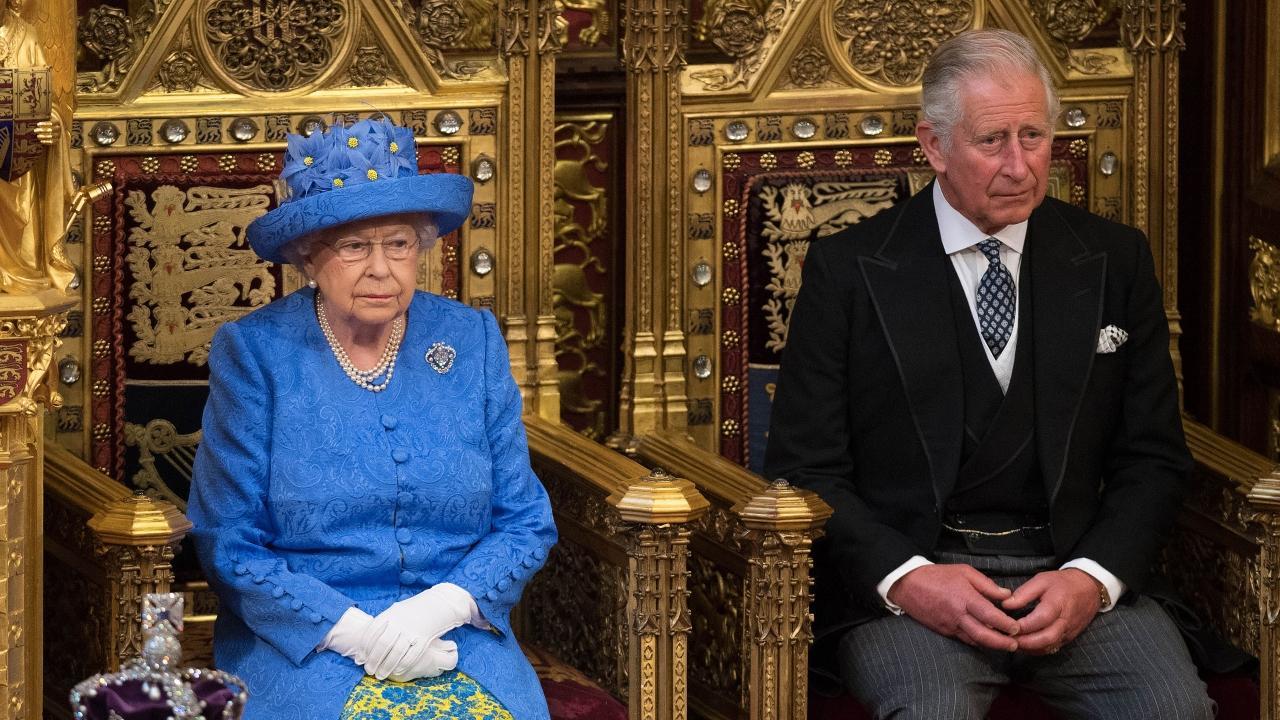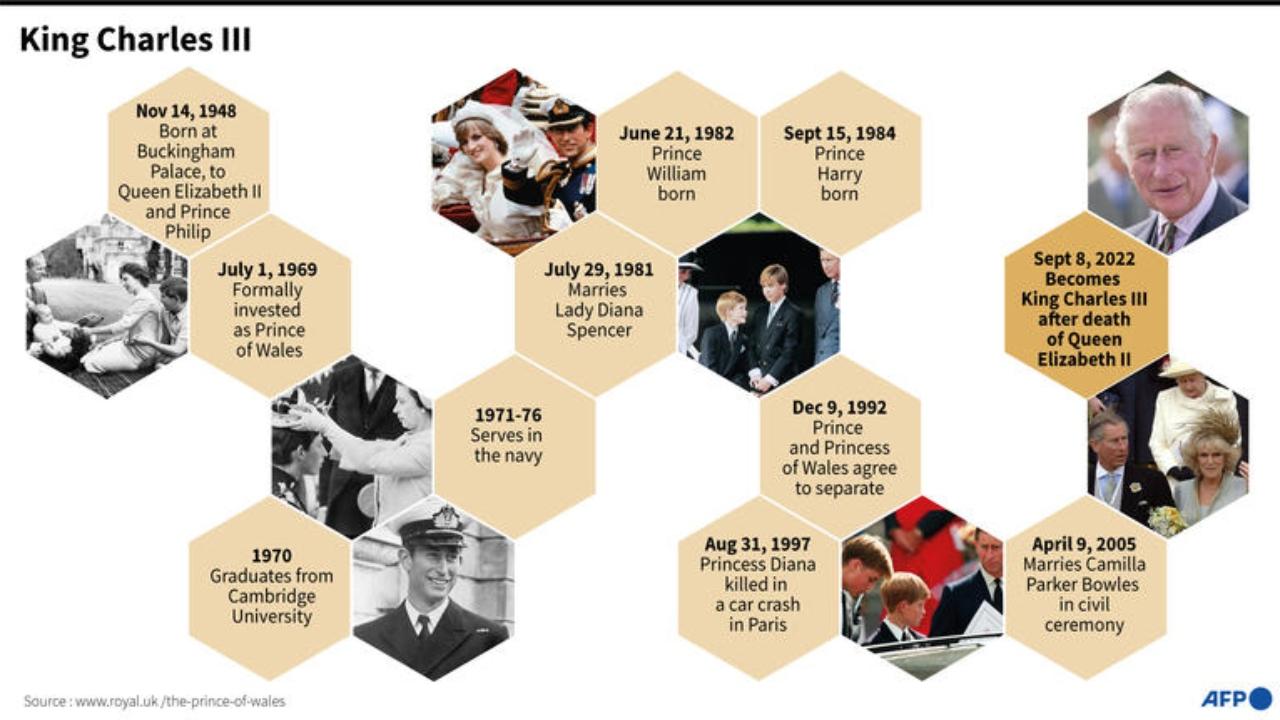Royal officials confirmed he is now known as King Charles III -- the first king of that name to sit on the throne since 1685

File photo taken on June 21, 2017 Britain's Queen Elizabeth II (L) and Britain's Prince Charles, Prince of Wales attend the State Opening of Parliament in the Houses of Parliament in London. Pic/AFP
Queen Elizabeth II, the longest-serving monarch in British history and an icon instantly recognisable to billions of people around the world, died at her Scottish Highland retreat on Thursday. She was 96.
ADVERTISEMENT
The eldest of her four children, Charles, Prince of Wales, who at 73 was the oldest heir apparent in British history, became king immediately.
Royal officials confirmed he is now known as King Charles III -- the first king of that name to sit on the throne since 1685.

Profile of King Charles III, former Prince of Wales, who became king immediately after the death of his mother Queen Elizabeth II on Thursday. (Pic/AFP)
His mother's death triggered an outpouring of condolences across the globe as world leaders paid homage to a woman whose reign spanned 70 years, straddling two centuries of seismic social, political and technological upheaval.
Hundreds of flowers and flickering candles were left at the gates of Buckingham Palace in central London, as billboards lit up in tribute across the capital with images of the queen.
Also Read: Camilla becomes queen, but without the sovereign's powers
In his first words as monarch, Charles called her death "a moment of the greatest sadness for me and all members of my family".
"We mourn profoundly the passing of a cherished Sovereign and a much-loved Mother," he added in a statement signed "His Majesty the King".
"I know her loss will be deeply felt throughout the country, the Realms and the Commonwealth and by countless people around the world."
Buckingham Palace announced the queen's death in a short statement, triggering 10 days of national mourning and a global outpouring of tributes to her long life and record-breaking reign.
A statement from His Majesty The King: pic.twitter.com/AnBiyZCher
— The Royal Family (@RoyalFamily) September 8, 2022
"The Queen died peacefully at Balmoral this afternoon," said the statement issued at 6:30 pm (1730 GMT).
"The King (Charles) and The Queen Consort (Camilla) will remain at Balmoral this evening and will return to London tomorrow."
From the steps of 10 Downing Street, Prime Minister Liz Truss -- who learned of the death two hours before it was announced -- mourned "the passing of the second Elizabethan age" nearly 500 years after the first.
"God save the king," she concluded, in words not uttered in Britain since 1952.
Seismic change
The queen's death came after the palace announced earlier on Thursday that doctors were "concerned" for her health and recommended she stay under medical supervision.
All her children -- Charles, Princess Anne, 72, Prince Andrew, 62, and Prince Edward, 58 -- flocked to her Scottish Highland retreat, Balmoral.
They were joined by Charles's elder son, Prince William, and William's estranged brother Prince Harry.
Andrew, Edward and William were photographed arriving at around 5:00 pm, after the queen had passed away. Harry, who travelled separately, arrived later in the evening.
Just two days earlier, she performed one of her core ceremonial functions as head of state, appointing Truss as the 15th prime minister of her reign, which started with Winston Churchill in power.
Also Read: Photos of Queen Elizabeth II with PM Modi, former Prez KR Narayanan and others
She was seen smiling in photographs but looking frail and using a walking stick.
One photograph of the meeting with Truss sparked alarm, showing a deep purple bruise on the monarch's right hand.
She came to the throne aged just 25 in 1952 in the exhausted aftermath of World War II, joining a world stage dominated by political figures from China's Mao Zedong to Soviet leader Joseph Stalin and US president Harry S. Truman.
Her tenure saw the last vestiges of Britain's vast empire crumble. At home more recently, Brexit divided her kingdom, and her family endured a series of scandals.
But throughout, she remained popular and was queen and head of state not just of the United Kingdom but 14 former British colonies, including Australia and Canada. New Zealand proclaimed Charles its new king.
This story has been sourced from a third party syndicated feed, agencies. Mid-day accepts no responsibility or liability for its dependability, trustworthiness, reliability and data of the text. Mid-day management/mid-day.com reserves the sole right to alter, delete or remove (without notice) the content in its absolute discretion for any reason whatsoever.
 Subscribe today by clicking the link and stay updated with the latest news!" Click here!
Subscribe today by clicking the link and stay updated with the latest news!" Click here!








